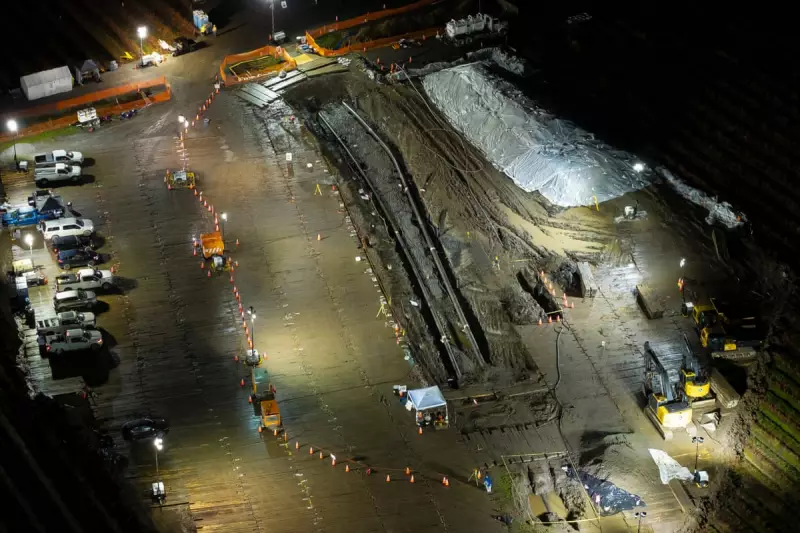
Source of Major Fuel Pipeline Leak Finally Identified
After two weeks of intensive investigation, officials have finally located the source of a significant leak in BP's Olympic Pipeline system in Washington state. The breakthrough comes after fuel was first discovered in a ditch near an Everett blueberry farm on 11 November, sparking concerns about regional fuel supplies and environmental damage.
Emergency Measures and Pipeline Operations
BP confirmed the leak originated from a 20-inch pipeline, not the neighbouring 16-inch line that runs alongside it. This crucial identification allowed the energy giant to safely restart the smaller pipeline while developing repair plans for the damaged section. "Repair plans for the 20-inch segment are being developed and a timeline for repair and restart will be shared when available," the company stated.
The situation became so severe that both Washington Governor Bob Ferguson and Oregon Governor Tina Kotek declared states of emergency. The Olympic Pipeline is critically important, transporting gasoline, diesel, jet fuel and other petroleum products to both states. It supplies 90% of Oregon's transportation fuel and much of the Seattle-Tacoma International Airport's jet fuel requirements.
Timeline of Events and Airline Responses
The leak was initially reported between Everett and Snohomish, with the Washington state department of ecology determining it contained a mixture of gasoline, jet fuel and diesel. BP responded by shutting down both parallel pipelines to investigate which was leaking. Although the 16-inch pipeline was briefly restarted on 16 November, it was shut down again after increased product appeared at a collection point.
By 19 November, Governor Ferguson issued his emergency declaration, waiving commercial driving regulations to ensure jet fuel could reach Seattle-Tacoma airport. Governor Kotek followed with similar measures in Oregon just days later.
Major airlines operating through Seattle-Tacoma implemented contingency plans to prevent holiday travel disruption. Alaska Airlines brought extra fuel into Seattle on inbound flights and arranged additional trucking shipments, while Delta Air Lines transported additional fuel and added refueling stops to some long-haul flights.
BP's excavation efforts proved successful when, after uncovering over 200 feet of pipeline, the company located the leak source on Tuesday morning. Both airlines have since discontinued their emergency fuel measures as pipeline operations gradually return to normal.
History of Safety Concerns
This incident adds to BP's troubled history with the Olympic Pipeline. Washington state's ecology department has recently fined the company $3.8 million for a 2023 gasoline spill from the same pipeline system. According to the Pipeline Safety Trust, a Washington-based non-profit, the Olympic Pipeline has leaked at least 13 times since 1999.
Most tragically, a 1999 leak near Bellingham caused an explosion that killed three children. The pipeline has experienced three separate leaks already in 2025 alone. "These incidents have caused over $100 million in property damage," said Kenneth Clarkson, spokesperson for the Pipeline Safety Trust. "Olympic Pipeline must explain what has changed and what they're doing to stop it."





